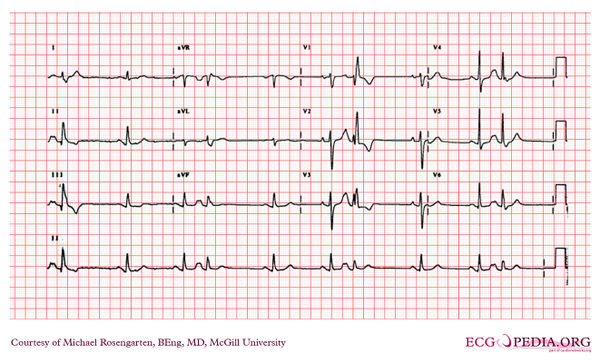McGill Case 6: Difference between revisions
Jump to navigation
Jump to search
No edit summary |
No edit summary |
||
| (4 intermediate revisions by the same user not shown) | |||
| Line 1: | Line 1: | ||
{{McGillcase| | {{McGillcase| | ||
|previouspage= McGill Case | |previouspage= McGill Case 5 | ||
|previousname= McGill Case | |previousname= McGill Case 5 | ||
|nextpage= McGill Case | |nextpage= McGill Case 7 | ||
|nextname= McGill Case | |nextname= McGill Case 7 | ||
}} | }} | ||
[[File: | [[File:E000706.jpg|thumb|600px|left|This recording shows sinus rhythm with premature atrial complexes. The p' wave can be seen deforming the T wave in the lead II rhythm strip. Note also that the atrial premature complexes reset the sinus node and hence there is no compensatory pause before the next sinus p wave. The QRS is deformed with a rsR' in V1 and a broad S in I with a duration of > 120 ms. diagnostic of aberrance with a right bundle branch morphology. The S1 Q3 and the right ward axis of the aberrant complexes suggest an additional left posterior fasicular block.]] | ||
Latest revision as of 05:09, 10 February 2012

|
